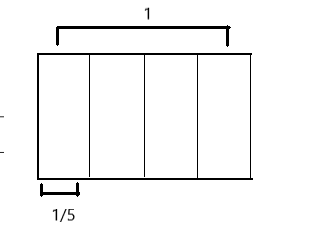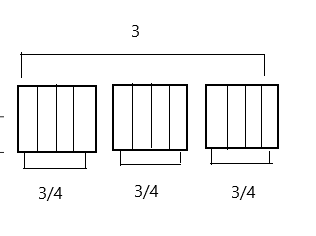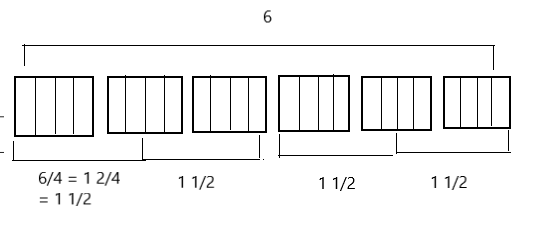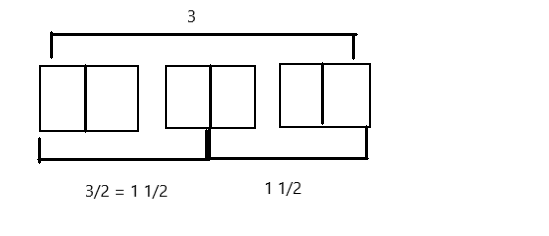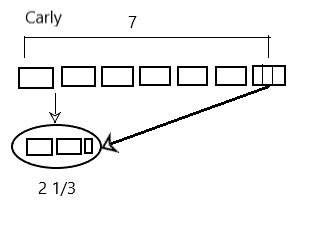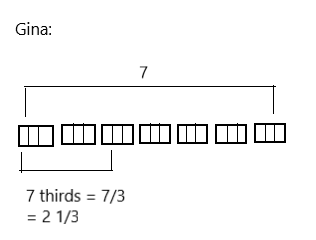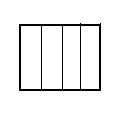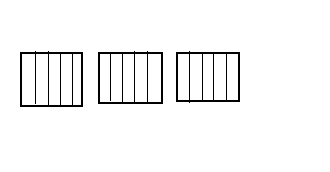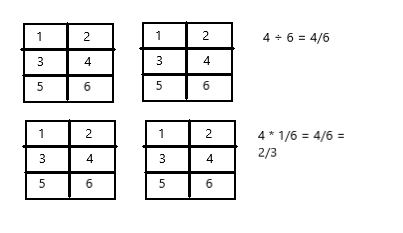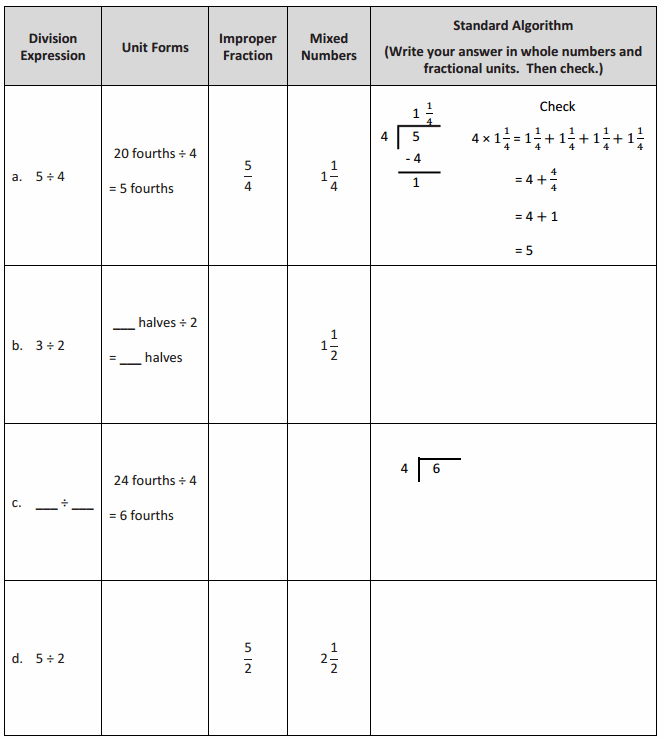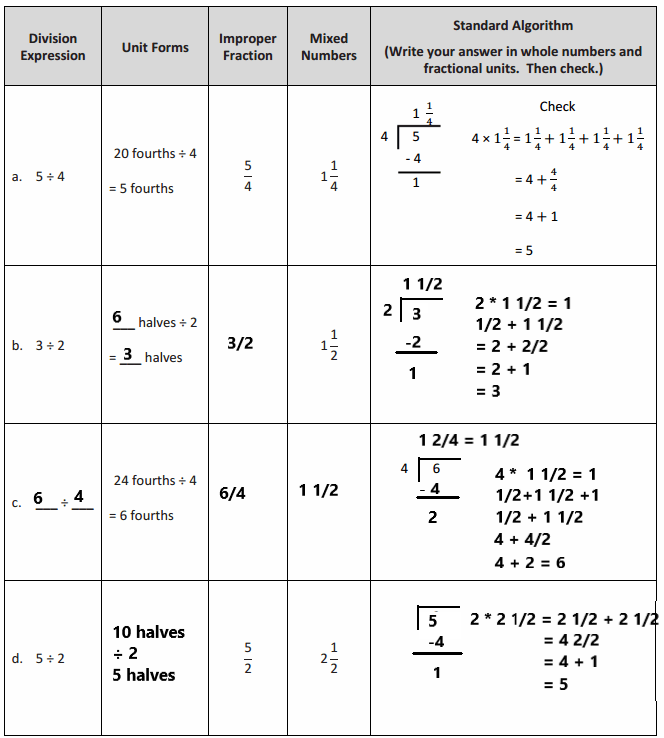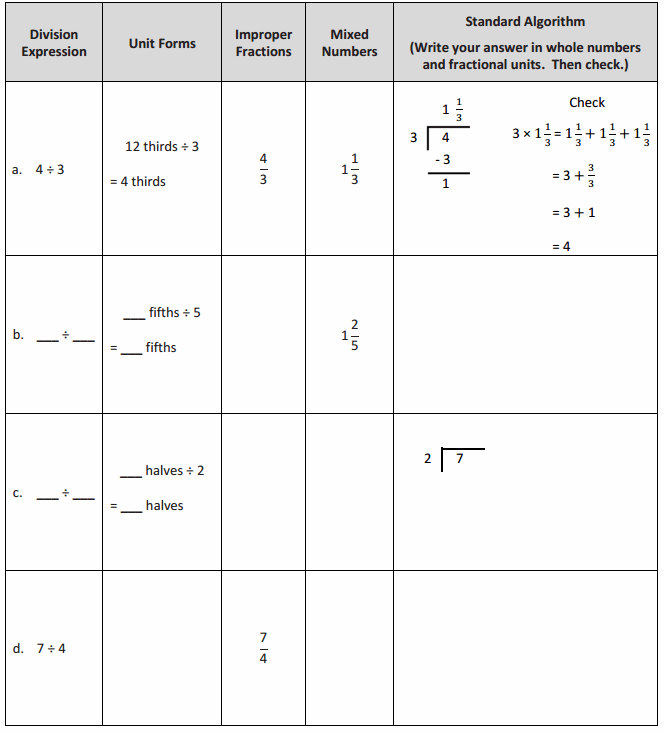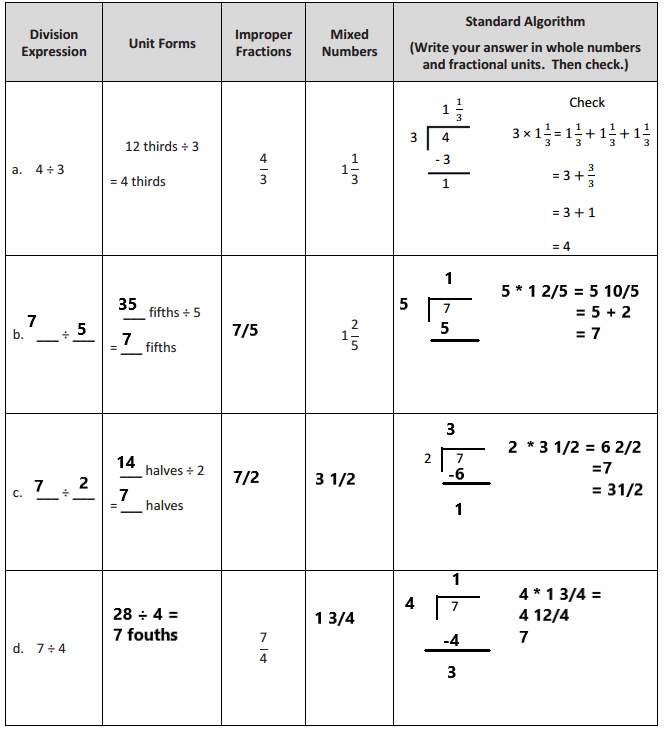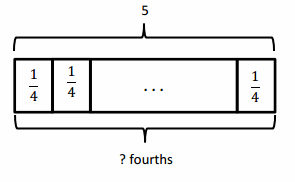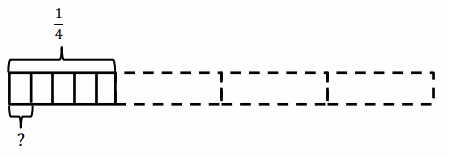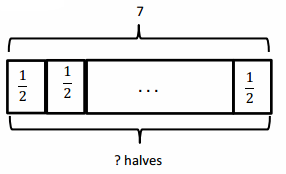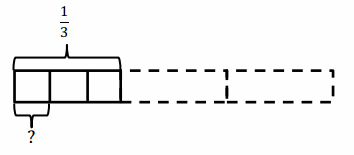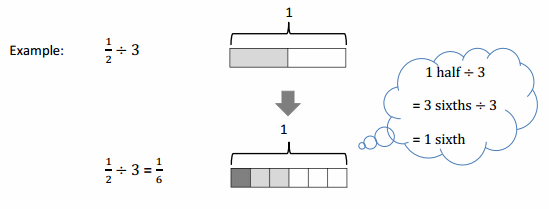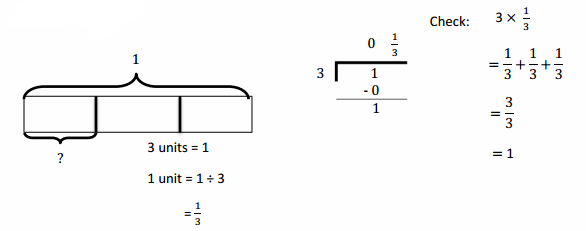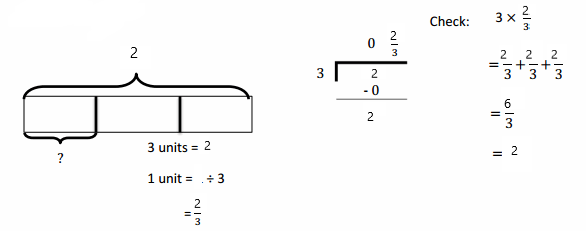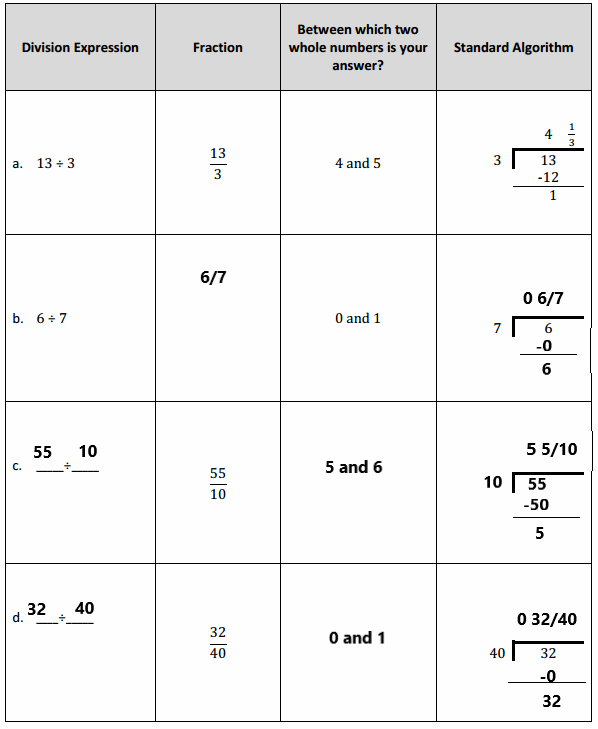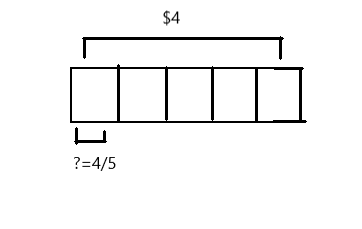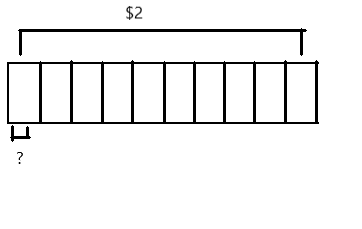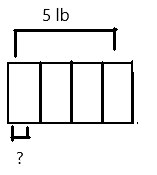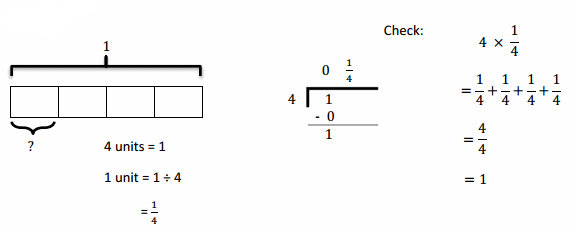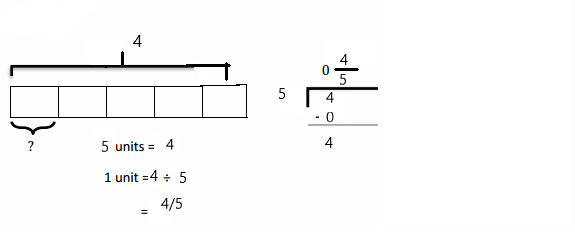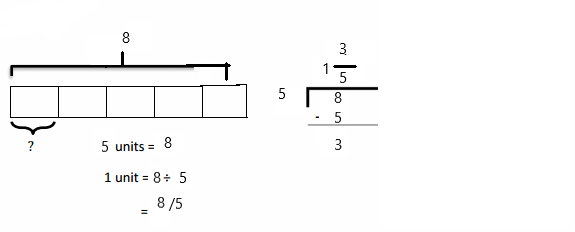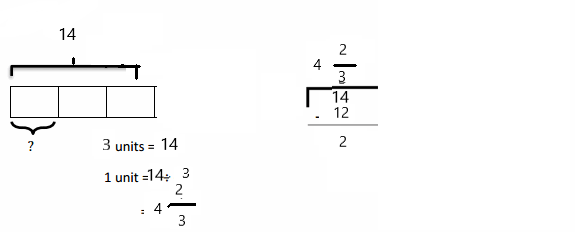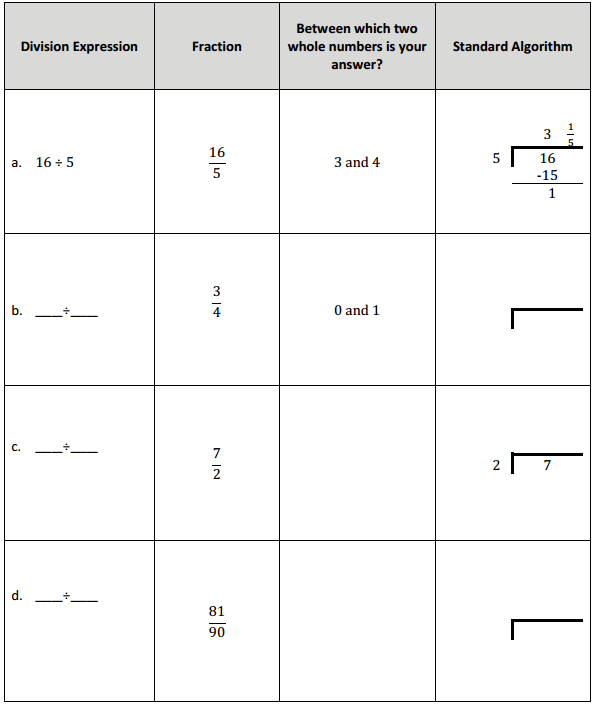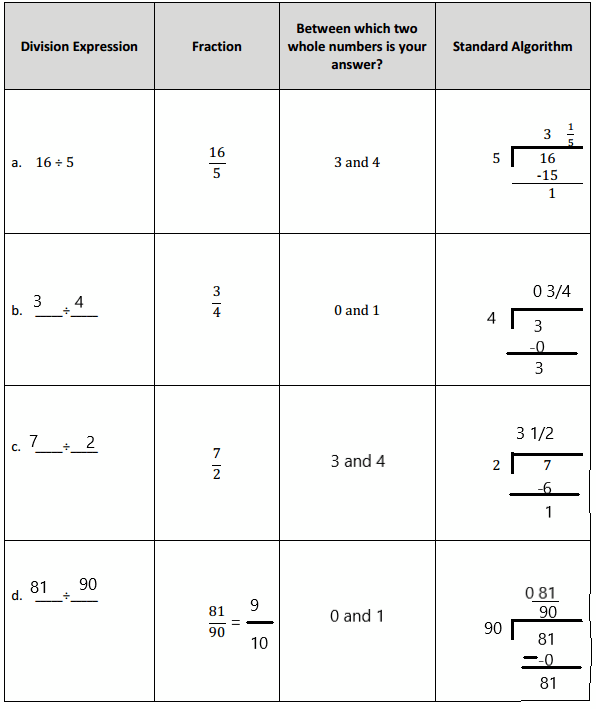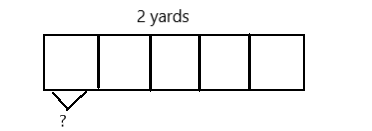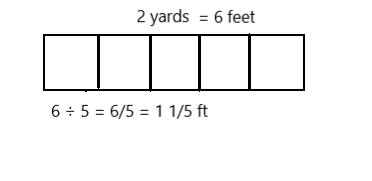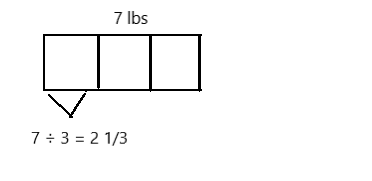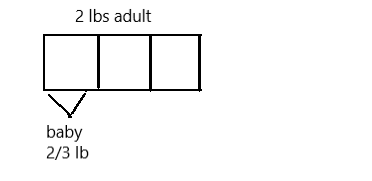Engage NY Eureka Math 5th Grade Module 4 Lesson 27 Answer Key
Eureka Math Grade 5 Module 4 Lesson 27 Problem Set Answer Key
Question 1.
Mrs. Silverstein bought 3 mini cakes for a birthday party. She cuts each cake into quarters and plans to serve each guest 1 quarter of a cake. How many guests can she serve with all her cakes? Draw a picture to support your response.
Answer:
Mrs. Silverstein can serve 12 guests a quarter of the cake.
Explanation:
Here, Mrs. Silverstein bought 3 mini cakes for a birthday party, and she cuts each cake into quarters and plans to serve each guest 1 quarter of a cake, so the number of guests can she serve with all her cakes is 3 ÷ \(\frac{1}{4}\) which is 12, here 4 fourths are 1 whole and 12 fourths are 3 wholes. So Mrs. Silverstein can serve 12 guests a quarter of the cake.
Question 2.
Mr. Pham has \(\frac{1}{4}\) pan of lasagna left in the refrigerator. He wants to cut the lasagna into equal slices so he can have it for dinner for 3 nights. How much lasagna will he eat each night? Draw a picture to support your response.
Answer:
Mr. Pham will eat \(\frac{1}{12}\) of the lasagna each night.
Explanation:
Here, Mr. Pham has \(\frac{1}{4}\) pan of lasagna left in the refrigerator and he wants to cut the lasagna into equal slices so he can have it for dinner for 3 nights, so Mr. Pham will eat \(\frac{1}{4}\) ÷ 3, here 1 fourth ÷ 3 which is 3 twelfths ÷ 3 which is 1 twelfths. So, Mr. Pham will eat \(\frac{1}{12}\) of the lasagna each night.
Question 3.
The perimeter of a square is \(\frac{1}{5}\) of a meter.
a. Find the length of each side in meters. Draw a picture to support your response.
Answer:
The length of each side is \(\frac{1}{20}\) meter.
Explanation:
Given the perimeter is \(\frac{1}{5}\) meter and the length of each side is, as the square has four sides and all sides are equal, so \(\frac{1}{5}\) ÷ 4 which is the side length
\(\frac{1}{5}\) ÷ 4 = 1 fifth ÷ 4
= 4 twentieths ÷ 4
= 1 twentieth.
So the length of each side is \(\frac{1}{20}\) meter.
b. How long is each side in centimeters?
Answer:
The length of each side in centimeters is 5 cm.
Explanation:
As the length of each side is \(\frac{1}{20}\) meter, so the length of each side in centimeters is
\(\frac{1}{20}\) meter = \(\frac{1}{20}\) × 100
on solving, we will get the result as 5 cm.
So the length of each side in centimeters is 5 cm.
Question 4.
A pallet holding 5 identical crates weighs \(\frac{1}{4}\) of a ton.
a. How many tons does each crate weigh? Draw a picture to support your response.
Answer:
Each carte weighs is \(\frac{1}{20}\) ton.
Explanation:
Given that a pallet holding 5 identical crates weighs \(\frac{1}{4}\) of a ton, so the number of tons does each crate weigh is \(\frac{1}{4}\) ÷ 5 = 1 fourth ÷ 4
= 5 twentieths ÷ 5
= 1 twentieth.
So each carte weighs is \(\frac{1}{20}\) ton.
b. How many pounds does each crate weigh?
Answer:
The number of pounds does each carte weighs is 100 pounds.
Explanation:
As we know that each carte weighs \(\frac{1}{20}\) ton, so the number of pounds is
\(\frac{1}{20}\) meter = \(\frac{1}{20}\) × 2000 pounds
on solving, we will get the result as 100 pounds.
So the number of pounds does each carte weighs is 100 pounds.
Question 5.
Faye has 5 pieces of ribbon, each 1 yard long. She cuts each ribbon into sixths.
a. How many sixths will she have after cutting all the ribbons?
Answer:
Faye will have 30 sixths after cutting all the ribbons.
Explanation:
Given that Faye has 5 pieces of ribbon and each 1 yard long and then she cuts each ribbon into sixths. So the number of sixths will she have after cutting all the ribbons is
1 ÷ \(\frac{1}{6}\) which is 6
6 sixth in 1-yard and 30 sixths in 5 yards.
So Faye will have 30 sixths after cutting all the ribbons.
b. How long will each of the sixths be in inches?
Answer:
The length of each of the sixths be in inches is 6 in.
Explanation:
As each sixth is \(\frac{1}{6}\) of a yard, so the length of each of the sixths be in inches is
\(\frac{1}{6}\) × 1 yard
= \(\frac{1}{6}\) × 36
on solving, we will get the result as 6 in.
so the length of each of the sixths be in inches is 6 in.
Question 6.
A glass pitcher is filled with water. \(\frac{1}{8}\) of the water is poured equally into 2 glasses.
a. What fraction of the water is in each glass?
Answer:
The fraction of the water is in each glass is \(\frac{1}{16}\).
Explanation:
Given that a glass pitcher is filled with water and \(\frac{1}{8}\) of the water is poured equally into 2 glasses. So the fraction of the water is in each glass is \(\frac{1}{8}\) × \(\frac{1}{2}\) which is \(\frac{1}{16}\).
b. If each glass has 3 fluid ounces of water in it, how many fluid ounces of water were in the full pitcher?
Answer:
There are 48 fluid ounces in the full pitcher.
Explanation:
Given that each glass has 3 fluid ounces of water in it and the fluid ounces of water were in the full pitcher was
3 × 2 = 6,
as 1 unit = 6, so 8 units is 8 × 6 = 48.
So there are 48 fluid ounces in the full pitcher.
c. If \(\frac{1}{4}\) of the remaining water is poured out of the pitcher to water a plant, how many cups of water are left in the pitcher?
Answer:
The number of cups of water is left in the pitcher is 3 \(\frac{15}{16}\) cups
Explanation:
Given that \(\frac{1}{4}\) of the remaining water is poured out of the pitcher to water a plant, so the number of cups of water is left in the pitcher is
\(\frac{3}{4}\) of 42
\(\frac{3}{4}\) × 42, on solving we will get the result as \(\frac{63}{2}\) which is 3 \(\frac{15}{16}\) cups of water left in the pitcher.
Eureka Math Grade 5 Module 4 Lesson 27 Exit Ticket Answer Key
Question 1.
Kevin divides 3 pieces of paper into fourths. How many fourths does he have? Draw a picture to support your response.
Answer:
The number of fourths does he have is 12.
Explanation:
As Kevin divides 3 pieces of paper into fourths and the number of fourths does he have is
Number of fourths = Number pieces of paper ÷ one fourth
= 3 ÷ \(\frac{1}{4}\)
= 3 × 4
= 12.
So, the number of fourths does he have is 12.
Question 2.
Sybil has \(\frac{1}{2}\) of a pizza leftover. She wants to share the pizza with 3 of her friends. What fraction of the original pizza will Sybil and her 3 friends each receive? Draw a picture to support your response.
Answer:
The fraction of the original pizza will Sybil and her 3 friends each receives is \(\frac{1}{6}\).
Explanation:
Given that Sybil has \(\frac{1}{2}\) of a pizza leftover and she wants to share the pizza with 3 of her friends, so the fraction of the original pizza will Sybil and her 3 friends each receives is \(\frac{1}{2}\) ÷ 3
on solving we will get the result as \(\frac{1}{6}\).
Eureka Math Grade 5 Module 4 Lesson 27 Homework Answer Key
Question 1.
Kelvin ordered four pizzas for a birthday party. The pizzas were cut in eighths. How many slices were there? Draw a picture to support your response.
Answer:
The number of slices were there is 32 slices.
Explanation:
Given that Kelvin ordered four pizzas for a birthday party and he cuts into eighths, so the number of slices were there is
as 1 pizza have 8 slices and for 4 pizza it will be
4 × 8 = 32 slices.
Question 2.
Virgil has \(\frac{1}{6}\) of a birthday cake left over. He wants to share the leftover cake with 3 friends. What fraction of the original cake will each of the 4 people receive? Draw a picture to support your response.
Answer:
The fraction of the original cake will each of the 4 people receives is \(\frac{1}{24}\).
Explanation:
Given that Virgil has \(\frac{1}{6}\) of a birthday cake left over and he share the leftover cake with 3 friends, so the fraction of the original cake will each of the 4 people receives is \(\frac{1}{6}\) ÷ 4
\(\frac{1}{6}\) × \(\frac{1}{4}\) on solving we will get the result as \(\frac{1}{24}\).
Question 3.
A pitcher of water contains \(\frac{1}{4}\) liters of water. The water is poured equally into 5 glasses.
a. How many liters of water are in each glass? Draw a picture to support your response.
Answer:
The number of liters of water are in each glass is \(\frac{1}{20}\) liters.
Explanation:
Given that a pitcher of water contains \(\frac{1}{4}\) liters of water and then he poured equally into 5 glasses, so the number of liters of water are in each glass is \(\frac{1}{4}\) ÷ 5
\(\frac{1}{4}\) × \(\frac{1}{5}\) on solving we will get the result as \(\frac{1}{20}\).
b. Write the amount of water in each glass in milliliters.
Answer:
The amount of water in each glass in milliliters is 50 milliliters.
Explanation:
The number of liters of water are in each glass is \(\frac{1}{20}\) liters, so the amount of water in each glass in milliliters is \(\frac{1}{20}\) × 1000, on solving we will get the result as 50 milliliters.
Question 4.
Drew has 4 pieces of rope 1 meter long each. He cuts each rope into fifths.
a. How many fifths will he have after cutting all the ropes?
Answer:
The number of fifths will he have after cutting all the ropes 20.
Explanation:
Here, we have 4 pieces of rope 1 meter long each and he cuts each rope into fifths, so the number of fifths will he have after cutting all the ropes 5 × 4 = 20.
b. How long will each of the fifths be in centimeters?
Answer:
The length of the each of the fifths be in centimeters is 20 cm.
Explanation:
Here, we have given that each rope is 1 meter long, so the length of fifth part will be equal to \(\frac{1}{5}\) which is 0.2 meters which is 20 cm.
Question 5.
A container is filled with blueberries. \(\frac{1}{6}\) of the blueberries is poured equally into two bowls.
a. What fraction of the blueberries is in each bowl?
b. If each bowl has 6 ounces of blueberries in it, how many ounces of blueberries were in the full container?
c. If \(\frac{1}{5}\) of the remaining blueberries is used to make muffins, how many pounds of blueberries are left in the container?
Answer:
a. The fraction of the blueberries is in each bowl is \(\frac{1}{12}\).
b. The number of ounces of blueberries were in the full container is 36 ounces of blueberries.
c. The number of pounds of blueberries are left in the container is 30 ounces.
Explanation:
a. Given that the container is filled with blueberries and \(\frac{1}{6}\) of the blueberries is poured equally into two bowls, so the fraction of the blueberries is in each bowl is \(\frac{1}{6}\) × \(\frac{1}{2}\) on solving we will get the result as \(\frac{1}{12}\).
b. As the each bowl has 6 ounces of blueberries in it, so the number of ounces of blueberries were in the full container is 6 × 6 which is 36 ounces of blueberries.
c. As there are \(\frac{1}{5}\) of the remaining blueberries is used to make muffins, so the number of pounds of blueberries are left in the container is \(\frac{1}{5}\) × \(\frac{5}{6}\) × 36 on solving we will get the result as \(\frac{180}{30}\) = 30 ounces.


